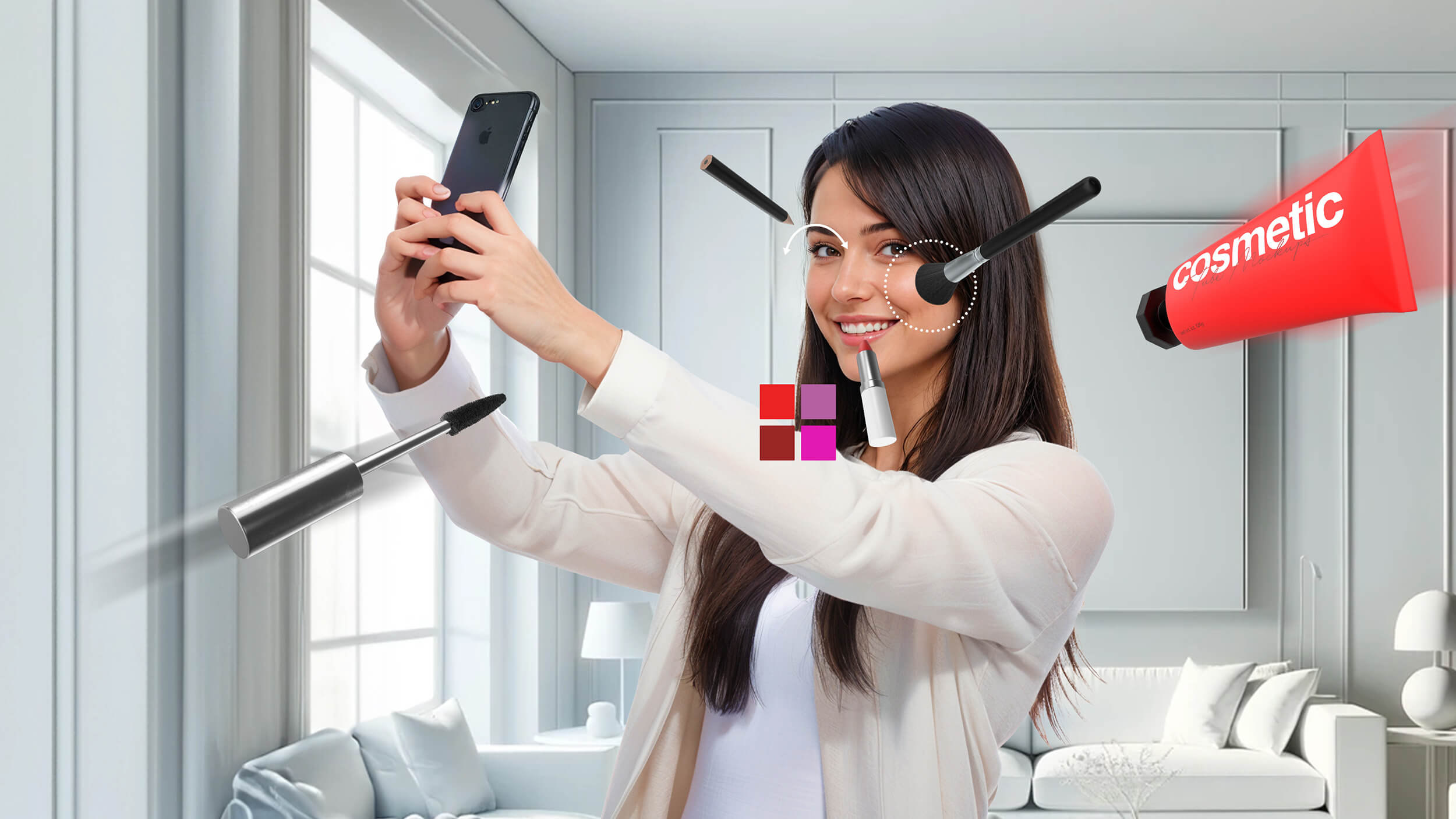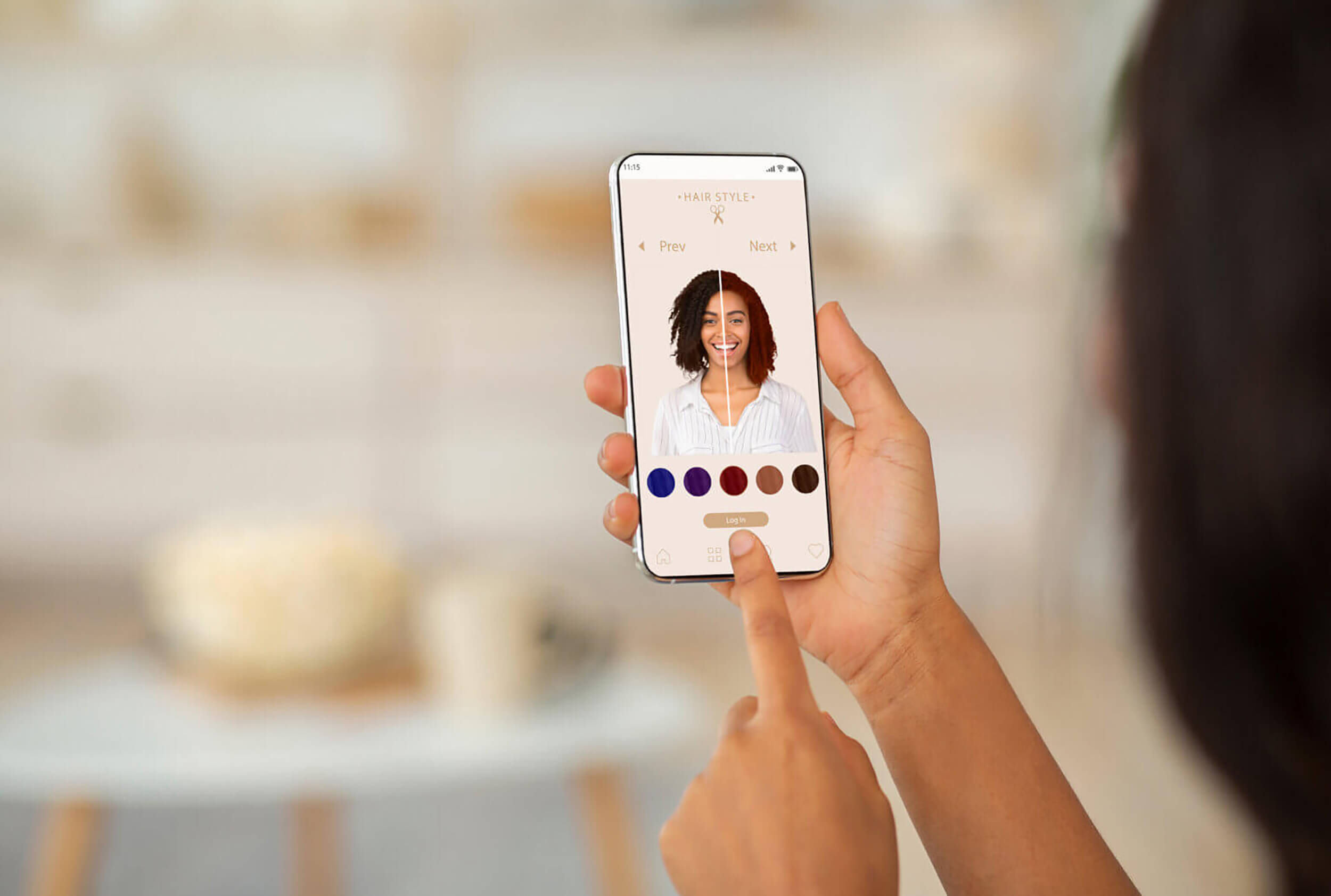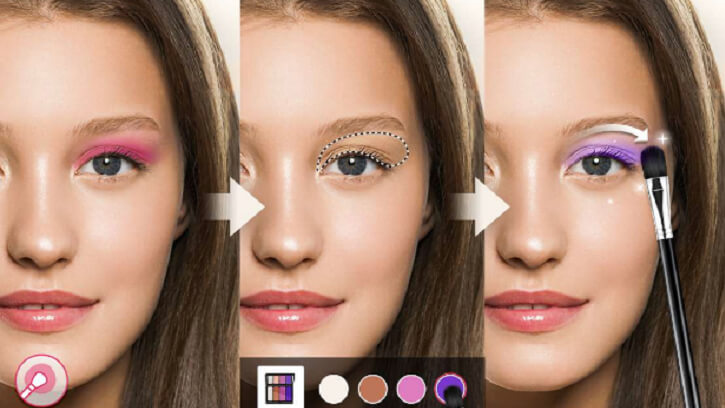News
Beauty Meets Technology: How AI, AR, and Virtual Try-Ons Are Transforming the Industry
Part 1: The Evolution of Beauty Technology
Introduction: Where Beauty Meets Technology
The beauty industry has always thrived on transformation. From Cleopatra’s kohl eyeliner to the invention of the first commercial lipstick, every era has seen new tools and techniques shape the way people express themselves. Today, however, the changes are happening faster and on a much larger scale, thanks to the marriage of beauty with cutting-edge technology.
The modern beauty consumer no longer relies only on glossy magazine ads or makeup counters at department stores. Instead, she (or he, or they) scrolls through Instagram filters, tests lipsticks via augmented reality apps, and uses artificial intelligence–driven skin analysis tools to decide which serum to buy. Beauty is no longer just physical—it is digital, immersive, and interactive.
Technology has shifted from being a helpful add-on to becoming an integral part of how beauty products are marketed, tested, purchased, and experienced. And in this transformation lies not only convenience but also deeper personalization, inclusivity, and confidence.
From Counter to Cloud: A Digital Beauty Revolution
Not too long ago, shopping for beauty products meant going into a store, swatching lipsticks on the back of your hand, spraying perfume strips, or trying foundation samples. Beauty counters were social hubs where makeup artists demonstrated techniques and helped customers match shades.
But the digital era has disrupted this ritual. The rise of e-commerce, accelerated dramatically by the COVID-19 pandemic, forced beauty brands to rethink how consumers could “try before they buy.” Lockdowns closed physical counters, and customers turned to their phones and laptops to shop for beauty essentials.
What was once unimaginable—picking a foundation shade or choosing a hair dye color online—became the new normal. To bridge this gap, brands turned to technology: virtual try-ons, shade-matching apps, and AI-powered recommendations. Suddenly, the beauty counter was in the cloud, available 24/7, personalized to each user.
The pandemic didn’t create beauty tech, but it propelled its adoption. What started as a necessity quickly became a preference. Consumers realized the convenience of testing hundreds of lip colors at home in seconds or getting a skincare routine tailored to their skin type through an app.
Artificial Intelligence in Beauty
Artificial intelligence (AI) has moved far beyond science fiction—it is now a daily part of our shopping habits. In beauty, AI is transforming personalization and product discovery.
Personalized Recommendations
Just as Netflix suggests movies and Spotify curates playlists, beauty platforms now use AI to recommend products. Algorithms analyze factors such as skin tone, purchase history, local climate, and even selfies to recommend the right foundation shade or skincare regimen. For example, Sephora’s AI systems learn from customer preferences and feedback to continuously refine recommendations.AI Skin Analysis
One of the most popular applications of AI in beauty is skin analysis. Apps like SkinVision, YouCam Makeup, and L’Oréal’s Modiface use smartphone cameras to scan the skin and identify concerns such as dryness, wrinkles, acne, or hyperpigmentation. Based on the analysis, the apps recommend personalized routines.This kind of technology has made dermatologist-level advice more accessible. While it doesn’t replace medical expertise, it empowers consumers to better understand their skin and make informed choices.
Predictive Tools for Hair and Makeup
AI isn’t limited to skincare. Haircare apps can predict how a haircut will look on different face shapes, while makeup simulators adjust looks based on lighting conditions. Imagine uploading a photo and instantly seeing yourself with curtain bangs or testing whether a bold purple lipstick suits you before clicking “add to cart.”
AI makes beauty personal, reducing the guesswork and increasing confidence in purchasing decisions.

Augmented Reality (AR) Applications: The Virtual Mirror
If AI powers the brain of beauty tech, then augmented reality (AR) provides the face. AR technology overlays digital information onto the real world, and in beauty, it has revolutionized how consumers try products.
Virtual Try-Ons
AR allows users to test makeup, hair colors, and even nail polishes in real time using their phone cameras. Sephora’s Virtual Artist app, for instance, lets shoppers try hundreds of lipstick shades instantly. L’Oréal’s Modiface platform powers try-on tools for multiple brands, allowing consumers to visualize themselves in different looks.Confidence and Reduced Returns
One of the biggest challenges of online shopping is uncertainty. Will this foundation shade match my undertone? Will this hair dye look flattering? AR try-ons reduce this anxiety by offering a preview, which not only boosts consumer confidence but also reduces return rates for brands.From Fun to Functional
Initially, AR filters were seen as playful tools, like Snapchat’s puppy ears or Instagram’s glitter overlays. But in beauty, AR has shifted from novelty to necessity. Consumers now expect to be able to virtually test products before buying.Big Players Driving Change
Sephora pioneered AR with its Virtual Artist.
L’Oréal, after acquiring Modiface, integrated AR try-ons across its portfolio of brands.
Perfect Corp’s YouCam Makeup app has become a household name for beauty enthusiasts.
AR has democratized experimentation, making it possible for anyone with a smartphone to test and play with beauty products anytime, anywhere.
Consumer Psychology: Why Tech Builds Trust
At first glance, it might seem odd that a virtual simulation could build more trust than in-person swatching. But psychology offers some answers.
Interactivity Enhances Engagement
Interacting with products—even virtually—creates a sense of ownership. When a consumer tries on a lipstick shade through AR, they begin to imagine themselves wearing it in real life, which increases the likelihood of purchase.Personalization Feels Like Care
AI-powered recommendations give consumers the impression that the brand “understands” them. This personal touch creates emotional connection and loyalty.Reducing Cognitive Dissonance
Buying beauty products often involves uncertainty: “What if it doesn’t suit me?” Virtual try-ons reduce this gap, ensuring customers feel more confident in their choice.The Joy of Play
Beauty has always been about self-expression and fun. Virtual try-ons tap into this joy by allowing consumers to experiment endlessly without commitment.
This blend of trust, personalization, and playfulness explains why beauty tech resonates so strongly with consumers.
Challenges and Limitations
Despite its rapid growth, beauty tech is not without challenges.
Accuracy of Shade Matching
Foundation matching is notoriously difficult even in stores. Lighting, camera quality, and screen displays can distort colors, leading to mismatches. Brands are working to improve algorithms, but perfection remains elusive.Data Privacy Concerns
AI and AR tools rely heavily on user data—photos, skin scans, purchase history. Consumers are increasingly wary of how their personal data is stored, shared, or used. Transparency and ethical data handling are crucial for trust.Accessibility and Inclusivity
Not all AR systems account for the full spectrum of skin tones or facial features. Inaccurate simulations can alienate users. Brands must ensure inclusivity in their tech offerings.Bridging Digital and Physical
While virtual try-ons are convenient, they cannot fully replicate the tactile experience of touching a product, smelling a fragrance, or feeling a texture. Brands need to balance digital innovation with sensory realities.
Conclusion of Part 1
The evolution of beauty technology has fundamentally transformed the consumer experience. What began as playful AR filters has grown into a sophisticated ecosystem where AI personalizes recommendations, AR offers immersive try-ons, and digital platforms create seamless shopping journeys.
While challenges remain—particularly around inclusivity and data privacy—the direction is clear: technology is no longer a sidekick in beauty; it is the new frontier.
Consumers are not just buying lipsticks or serums—they are buying experiences. And as beauty merges with technology, the line between self-expression and digital innovation continues to blur.
Part 2: The Future of Beauty Tech
Introduction: Looking Ahead
If Part 1 was about how technology reshaped beauty in the past decade, Part 2 is about peering into the crystal ball. The speed of innovation shows no signs of slowing down. In fact, beauty technology is on the verge of becoming even more futuristic, blending artificial intelligence, biotechnology, sustainability, and digital realities into one seamless experience.
We are heading toward a future where you may 3D-print your skincare serum at home, where your mirror gives you a daily skin health report, and where your avatar in the metaverse wears the same lipstick shade you bought in real life. The beauty industry is no longer simply responding to consumer needs—it is anticipating them, sometimes even before consumers realize what they want.
So, what does the future hold? Let’s break it down.
AI and Hyper-Personalization: Skincare Like Fingerprints
In the coming years, personalization will move beyond simple product recommendations. Thanks to more advanced AI and biometric data, beauty routines will become as unique as fingerprints.
DNA-Based Skincare
Companies are already experimenting with skincare products tailored to an individual’s genetic makeup. By analyzing DNA, brands can identify predispositions to wrinkles, sensitivity, or pigmentation and then create serums and creams customized to those specific needs. Imagine a skincare line that’s literally “made for you” at the molecular level.Adaptive Beauty Products
Future products may adapt in real-time to external conditions. Think of a foundation that changes coverage depending on humidity or a moisturizer that boosts hydration when your skin is dry but lightens when your skin is oily. AI could help create formulas that continuously adjust to environmental and physiological factors.Virtual Beauty Advisors
Instead of reading labels or scrolling through endless reviews, consumers will interact with AI-driven virtual consultants. These digital advisors could hold real-time conversations, analyze your skin over video, and suggest holistic solutions that combine skincare, diet, and lifestyle tips.
Hyper-personalization will not just make beauty more effective—it will deepen trust and loyalty, as consumers feel truly seen and understood.
Augmented Reality 2.0: Beyond Try-Ons
AR has already made it possible to test lipsticks or hair colors virtually. But the next wave of AR will go beyond superficial experimentation and dive into immersive beauty experiences.
Smart Mirrors at Home
Tomorrow’s vanity mirrors will be more than just reflective glass. They will double as health and beauty dashboards, analyzing skin, tracking progress, and suggesting routines. Imagine brushing your teeth while your mirror scans your face, notes improvements in fine lines, and reminds you to apply sunscreen.Metaverse Beauty
As digital worlds grow, so will the demand for beauty in virtual spaces. People will want their avatars to reflect their identities, which means digital makeup, virtual fragrances, and skin customization options. Brands like Gucci Beauty and NARS are already experimenting with virtual cosmetics for gaming platforms and metaverse environments.AR in Retail Stores
Physical stores will incorporate AR even more seamlessly. Shoppers could walk into a store, stand in front of a screen, and instantly see themselves wearing multiple looks without ever opening a product. This hybrid model will merge the tactile joy of in-store shopping with the convenience of digital try-ons.Scent and Touch Simulation
In the far future, AR may even integrate with haptic and scent technologies, allowing consumers to “feel” a cream’s texture or “smell” a perfume through digital devices. This could revolutionize online fragrance shopping, one of the last frontiers untouched by virtual try-ons.

Sustainability and Green Tech: The Ethical Beauty Revolution
The future of beauty will not only be about high-tech features but also about responsibility. Consumers are increasingly demanding sustainability, and technology will play a key role in making beauty greener.
Smart Packaging
Packaging will evolve from disposable to intelligent. Think refillable containers with built-in sensors that track product usage and alert you when it’s time to reorder. Some may even gamify sustainability by rewarding users for refilling instead of buying new.Biodegradable Innovation
With advancements in biotechnology, expect to see biodegradable packaging that dissolves in water or composts naturally. Imagine a face mask sachet that disappears after use, leaving no trace behind.Waterless Beauty
Traditional beauty products often contain up to 80% water, which strains resources. Future innovations will focus on concentrated, waterless products—powder cleansers, solid serums, or dissolvable tablets—that reduce environmental impact while being travel-friendly.Lab-Grown Ingredients
Biotechnology will also replace resource-heavy natural ingredients. Instead of harvesting rare plants, labs will grow active ingredients like collagen, hyaluronic acid, or squalane sustainably. This ensures efficacy without environmental damage.
In the future, “clean beauty” won’t just mean non-toxic ingredients—it will mean an entire ecosystem that’s ethically designed and environmentally responsible.
3D Printing: Beauty on Demand
One of the most exciting frontiers is the potential of 3D printing in beauty.
Custom Makeup Printing
Companies like Mink and Chanel have already explored 3D-printed makeup. Consumers could one day print their own lipstick shades at home, choosing exact colors to match outfits or moods.Personalized Skincare Capsules
Imagine a device that prints daily skincare capsules containing the precise dose of actives your skin needs at that moment, based on AI analysis of your skin’s condition.Accessibility for All
3D printing could also make beauty more inclusive. People with specific needs—such as prosthetic wearers—might print custom makeup tools or products tailored to their unique features.
The future of beauty may not just be about buying products but creating them instantly at home.
Wearable Beauty Tech: Skin Trackers and Smart Devices
The rise of wearables in health and fitness (like Fitbits or Apple Watches) will naturally extend into beauty.
Skin-Monitoring Patches
Thin, flexible patches could continuously monitor skin hydration, UV exposure, and even pollution levels. The data would sync to your phone and recommend products or actions in real time.Smart Makeup Tools
Future devices may include brushes that analyze your skin while applying makeup or hairdryers that adjust heat to minimize damage.Sleep and Skin Connection
Wearables might also track how sleep, stress, and diet impact skin health, offering holistic recommendations. The boundary between wellness and beauty will blur further as technology integrates both.
Inclusivity and Diversity Through Tech
One of the most powerful promises of beauty technology is its ability to champion inclusivity.
AI for All Skin Tones
Earlier beauty apps sometimes struggled to accurately simulate products on darker skin tones. Future AI will be trained on diverse datasets to ensure inclusivity across skin tones, genders, and ages.Assistive Beauty Tools
Technology can empower people with disabilities to engage more easily with beauty. Voice-activated makeup tutorials, AR-guided application, or adaptive tools could make beauty routines more accessible.Breaking Cultural Barriers
Digital platforms will also showcase global beauty traditions, allowing people to explore and celebrate diverse aesthetics, from Korean skincare rituals to African braiding techniques.
Inclusivity will no longer be a trend—it will be a built-in feature of all beauty technology.
The Ethical Dilemmas of Beauty Tech
With innovation comes responsibility. The future of beauty tech will also need to confront ethical challenges.
Data Privacy
If AI is scanning faces and DNA, how secure is this data? Brands must implement strict privacy protections to ensure consumer trust.Digital Identity and Self-Esteem
While AR can boost confidence, it may also create unrealistic beauty standards if not handled responsibly. The industry must balance fun experimentation with authenticity.Accessibility Gap
High-tech beauty tools may initially be expensive, creating inequality between those who can afford them and those who cannot. Companies must find ways to make innovations affordable.
Addressing these challenges will be critical for the future success of beauty technology.
Conclusion: The Road Ahead
The future of beauty is not a far-off fantasy—it is already unfolding. AI-driven personalization, AR-powered immersion, 3D printing, sustainable biotech, and wearable devices are converging to create a new era of beauty that is hyper-personalized, ethical, and inclusive.
In this future, consumers will no longer be passive buyers but active co-creators of their beauty experiences. The line between technology, wellness, and self-expression will blur, making beauty not just about how you look but how you feel and interact with the world.
As we step into this exciting future, one thing is clear: beauty and technology are no longer separate industries—they are one. And together, they will redefine not only how we see ourselves but how we see each other.
Part 3: Bridging Beauty, Technology, and Humanity
Introduction: Beyond the Surface
When people talk about technology in beauty, it’s easy to imagine robots applying foundation or virtual avatars strutting through digital catwalks. But beauty has never been just about appearances—it is about how people feel, how they connect, and how they express themselves. Technology, at its best, enhances those human elements rather than replacing them.
This third section reflects on how innovations in AI, AR, and digital beauty not only reshape the industry but also redefine what beauty means in our society. The conversation isn’t only about the future of products but about the future of people—their identities, values, and voices.

Case Studies: Where Innovation Meets Impact
L’Oréal: The Tech Giant in Disguise
L’Oréal has positioned itself not only as a cosmetics powerhouse but also as a tech leader. Its AI-powered skin analysis apps (like Skin Genius) and AR try-on tools have helped millions of consumers find the right products with confidence. By acquiring Modiface, a pioneer in AR beauty, L’Oréal proved that digital transformation is not optional—it’s foundational.Sephora: Blurring the Lines Between Store and Screen
Sephora’s Virtual Artist app remains a benchmark for AR in beauty. The company combines digital try-ons with in-store experiences, creating an omnichannel ecosystem where customers move seamlessly between digital discovery and physical purchase.Perfect Corp: Democratizing Beauty Tech
This company powers AR and AI tools for multiple brands. From shade matching to skin diagnostics, Perfect Corp has helped even smaller brands access cutting-edge technology, democratizing innovation that once belonged only to industry giants.Shiseido: The Human Touch in Digital
Shiseido emphasizes that beauty tech should never lose sight of the human element. Its AI-driven counseling platforms don’t just recommend products—they encourage conversations about lifestyle, mental health, and confidence, making beauty more holistic.
These examples show that technology isn’t about replacing artistry but scaling it, making expert advice accessible to millions in real time.
The Social Dimension of Beauty Tech
The rise of digital beauty also carries deep social implications.
Empowerment Through Access
For consumers in remote areas, AR try-ons and AI advisors open doors to products and expertise they would otherwise never access. Technology shrinks the gap between luxury and accessibility.Community Building
Online beauty platforms aren’t just about products; they’re about shared experiences. People gather in forums, TikTok trends, and AR-powered social shopping events. This fosters global communities where beauty transcends cultural borders.Redefining Standards
Algorithms can either reinforce narrow ideals or celebrate diversity. The industry now has an opportunity to reprogram beauty standards by ensuring AI recognizes every skin tone, face shape, and age group equally.
Ethical Responsibilities Moving Forward
With great innovation comes great responsibility. As beauty technology becomes more advanced, several ethical questions must remain at the forefront:
Privacy – Facial scans, biometric data, and even genetic profiles raise concerns. Brands must guarantee that consumer data is safe, transparent, and never exploited.
Mental Health – While AR filters can boost confidence, they can also feed unrealistic expectations. Companies must balance inspiration with authenticity, encouraging self-love rather than dependency on perfection.
Affordability – Beauty tech risks becoming a luxury reserved for the wealthy. The future must prioritize accessibility, ensuring that technology empowers everyone, not just a privileged few.
By addressing these challenges directly, the industry can ensure that progress remains inclusive and ethical.
The Human Element: Why Beauty Still Matters
At its core, beauty has always been about human connection—how people present themselves, how they feel in their skin, and how they express their identity. Technology doesn’t change that truth; it amplifies it.
AI as a Partner, Not a Replacement – AI can guide and recommend, but the artistry of makeup application and the rituals of self-care will always belong to human hands and hearts.
AR as Exploration – Virtual try-ons let people experiment freely, encouraging creativity and play rather than imposing rules.
Tech as a Confidence Builder – When done right, technology reminds consumers that beauty isn’t about looking perfect—it’s about feeling authentic, powerful, and proud of one’s uniqueness.
A Vision of the Future: 2035 and Beyond
Let’s imagine a day in the life of beauty in the year 2035.
You wake up, and your smart mirror greets you with a skin health report, noting hydration levels and reminding you to drink more water. Your skincare printer dispenses a customized serum formulated for today’s pollution index and UV forecast. Later, while preparing for a virtual meeting, your AR assistant suggests a lipstick shade that complements both your outfit and your mood, which it reads from subtle biometric cues.
That evening, you log into a metaverse beauty party with friends across the globe. You experiment with avant-garde makeup looks that would be impossible in real life, laughing together as you share styles. Before bed, your wearable patch downloads the day’s skin exposure data, syncing it with your sleep tracker to give holistic advice for tomorrow.
This is not science fiction—it’s a trajectory already unfolding. And while the devices may evolve, the purpose will remain the same: to help people feel confident, creative, and connected.
Conclusion: Beauty, Technology, and Humanity United
As we close this exploration, one truth stands clear: the marriage of beauty and technology is not about gadgets or algorithms. It is about people. It is about making beauty more accessible, more sustainable, more inclusive, and more fun.
Technology alone cannot define beauty—it is only when paired with human creativity, empathy, and individuality that it becomes truly transformative.
The future of beauty is not just about seeing yourself differently in the mirror; it’s about seeing yourself differently in the world. And with every leap in technology, we move closer to a world where beauty is not a standard to chase but a spectrum to celebrate.

